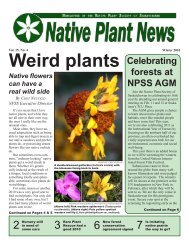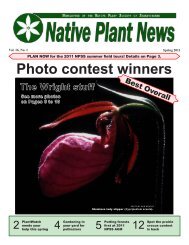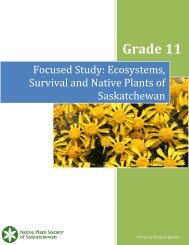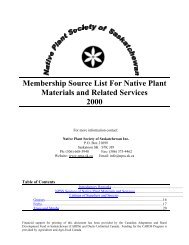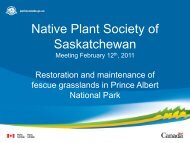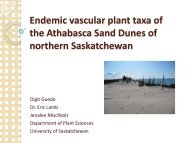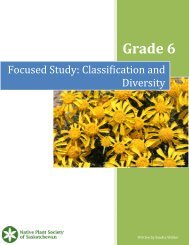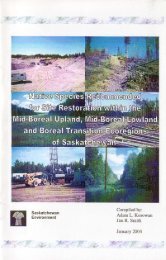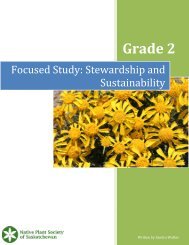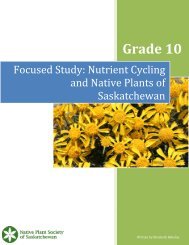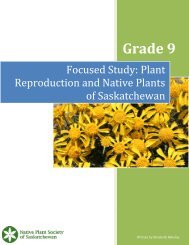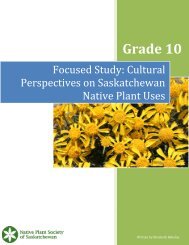Native Plants As Habitat For Wildlife - Native Plant Society of ...
Native Plants As Habitat For Wildlife - Native Plant Society of ...
Native Plants As Habitat For Wildlife - Native Plant Society of ...
Create successful ePaper yourself
Turn your PDF publications into a flip-book with our unique Google optimized e-Paper software.
Some <strong>Plant</strong>-Animal Relationships in the Lake Athabasca Sand Dunes<br />
Peter Jonker<br />
Extension Division, University <strong>of</strong> Saskatchewan<br />
I cannot tell you that the dunes are teeming with unusual wildlife relating in most unusual<br />
ways to local plants. The truth is that, although the wide open sand fields occasionally<br />
serve as places to escape mid-summer mosquitoes and blackflies, they are generally<br />
avoided by various local animal species as largely unfriendly terrain with little to <strong>of</strong>fer in<br />
comfort or food. The dunes are in many ways a mostly deserted, windswept landscape<br />
suffering from temperature extremes.<br />
It is this very desolation, however, which serves to bring into surprising and delightful<br />
contrast the presence life. Whether it be, on a small scale, a single clump <strong>of</strong> floccose<br />
tansy clinging to the surface <strong>of</strong> an immense sand field or, on a larger scale, a pocket <strong>of</strong><br />
felt-leaved willow or jack pine sprouting from a moist interdune trough, each is like an<br />
oasis. These <strong>of</strong>ten provide important opportunities for a variety <strong>of</strong> insects, birds, or<br />
mammals during the course <strong>of</strong> a year. These provide ongoing opportunities for human<br />
visitors to encounter and observe such animal life. Having camped and hiked in the dunes<br />
on 12 occasions with groups or on personal expeditions, I have had recurring<br />
opportunities to observe some relationships.<br />
In this presentation, supported with slides, we will consider what vegetation<br />
characteristics are likely to be <strong>of</strong> interest to resident animals, how this is reflected in their<br />
use <strong>of</strong> the dunes area generally, and how this is reflected in their use <strong>of</strong> particular species.<br />
13



